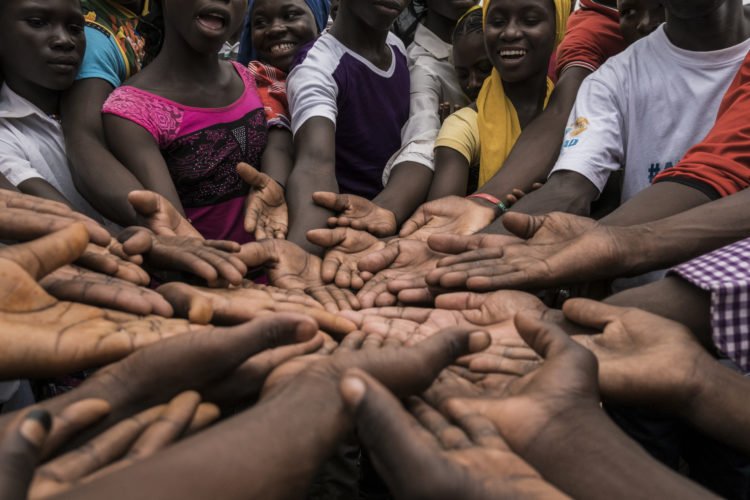A day after Chad’s president Idriss Déby died from combat wounds, we are publishing an opinion piece by Mabingué Ngom, the Regional Director of the United Nations Fund for Population (UNFPA) in West and Central Africa.
.
To warn today of a possible storm in the Sahel does not amount to giving in to any pessimism. Rather, it is a matter of being clear-headed and pragmatic in the face of social and political risk, in order to prevent the region from plunging into an even more serious crisis.
The recession caused by the Covid-19 pandemic is in fact added to all the structural weaknesses of the Sahel – poverty, inequalities, rampant urbanization with its share of precarious housing and difficult access to basic social services. Insecurity continues to hamper access to education, health and employment from Mali to Chad, through Burkina Faso, Niger and Nigeria.
The continued growth of the population, around 3% per year, is reflected in social demand, but the situation is not fatal. Everywhere, the figures give cause for hope: the more girls are educated, for example, the more the fertility rate goes down.
The Sahel, in the process of being populated.
An in-depth study on the link between demography and security, carried out by the regional office of the UNFPA in West and Central Africa (UNFPA-WCARO) and its partners, clearly warns us. It recalls that the “Sahel can be described as as a zone in the process of being populated”.
From 60 million inhabitants in 1950, its population rose to 320 million people, in a territory as large as five times Egypt or ten times France for the G5-Sahel countries alone (Mauritania, Mali, Burkina Faso, Niger and Chad). Fertility rates remain high, while contraceptive prevalence does not exceed 12.3%, compared to an average of 27% in sub-Saharan Africa. Almost half (47%) of the population of the G5-Sahel countries is under 15, and 80% under 35.
As the population continues to grow and is set to double in Mali and Niger by 2050, the lack of prospects for a large part of today’s youth is already a huge source of pressure. And this, especially in the epicenter of the crisis that has become Liptako-Gourma, a region straddling Burkina Faso, Mali and Niger. The rise in insecurity is attributed to violent extremism, transnational organized crime and local conflicts. All this against a backdrop of idleness among young people, easy recruits for armed groups.
Our study on the relationship between demography, peace and security shows that after a period of decline between 2008 and 2014, the continuous rise in youth unemployment in the Sahel (28%, ten points higher than the world average) is reflected in a aggravated insecurity.
Other variables come into play, of course, such as high demographic dependence (dependents for each working adult) or insufficient secondary education (37%, a level twice lower than the world average). Surprisingly, our study shows that a high literacy rate also promotes insecurity.
The reason is simple, even if it goes against our initial assumptions. Cohorts of young graduates arrive each year in a saturated labor market, amplifying frustrations. It was this very phenomenon, ten years ago, that sparked the Arab Spring.
Focus on partnerships and community responses.
All these findings are in the process of being better documented. What about action plans and ways out of the crisis? From experience, we at UNFPA know that the virtuous circle of partnerships can provide adequate solutions to challenges that are as numerous as they are interconnected. An initiative called Fass Emergent (FassE), led since 2018 by UNFPA in the Dakar pilot municipality of La Gueule Tapée, Fass and Colobane, shows that it is possible to change the situation, as long as a whole series of actors agree on a common goal.
In this case, it is about capturing the “demographic dividend” on a local scale, in a municipality of 80,000 people. The bulk of the work consisted of transforming a dispensary into a modern health center, to raise the medical platform and provide it with a maternity hospital.
Four objectives are pursued simultaneously, in a comprehensive approach: improving sexual and reproductive health, combating school dropout, promoting the empowerment of women and the employability of young people. Training workshops with a capacity of 200 apprentices per year have been set up, for trades ranging from mechanics to crafts and cellphone repair.
The Emerging Fass project (FassE), led by UNFPA, UNIDO, UN-Women and national agencies such as the Agency for the Promotion of Investments and Major Works (Apix) and the Economic Development Support Program and Social Security of Senegal (PADESS), in addition to the municipality itself, represents in itself an instrument of stability.
It is found to be replicable on a larger scale, in both rural and urban settings. In this case, the big difference is not what is called, in development language, “ownership” by its beneficiaries. It is designed to be their property first and foremost, as a way to bring the hope that young people in the Sahel so badly need to build the future.

